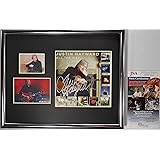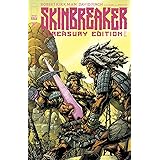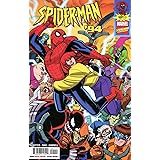With an estimated 2 million weddings occurring annually across the globe, the sartorial decisions for guests are as varied as the celebrations themselves. Each invitation presents a unique challenge: what to wear that strikes the perfect balance between elegance, appropriateness, and personal style? The video above offers a glimpse into the diverse world of wedding guest dresses, serving as a visual prompt for navigating this intricate landscape of event attire. This guide delves deeper into the crucial factors that dictate your ensemble, ensuring you arrive impeccably dressed for any nuptial celebration.
Navigating the Nuances of Wedding Guest Dresses
Selecting the ideal wedding guest dress is akin to mastering a complex symphony; every element must harmonize to create a flawless performance. The process demands a sophisticated understanding of various protocols, seasonal considerations, and personal aesthetic preferences. Successfully dressing for a wedding is less about following rigid rules and more about interpreting cues with discerning taste, much like an experienced conductor interprets a musical score.
Decoding Dress Codes: Your Styling Compass
The dress code specified on an invitation is your primary directive, a North Star guiding your fashion journey. Misinterpreting this can lead to discomfort or, worse, a significant faux pas. Consequently, a detailed comprehension of these classifications is paramount for appropriate wedding attire.
- Black Tie: This is the pinnacle of formal elegance. For women, a floor-length evening gown is virtually mandatory. Think luxurious fabrics such as silk, satin, velvet, or lace. The silhouette should be refined and sophisticated, echoing the gravitas of the occasion. It is an opportunity for classic glamour, much like a grand opera requires its lead to wear a show-stopping costume.
- Formal or Black Tie Optional: This category offers a slight reprieve from Black Tie’s strictness. While a full-length gown remains an excellent choice, a sophisticated cocktail dress or an elegant pantsuit in a high-quality fabric is also acceptable. The key distinction here is the ‘optional’ clause, granting guests a broader scope for interpretation without sacrificing formality. Consider this the sophisticated chamber music ensemble, where individual instruments shine within a structured framework.
- Cocktail Attire: A widely popular choice, cocktail attire calls for a dress that falls between the knee and midi-length. Focus on chic designs, quality fabrics, and elegant embellishments. A stylish jumpsuit can also fit this bill. This code champions a balance of fun and formality, much like a vibrant art exhibition opening.
- Semi-Formal: This is arguably the most ambiguous code, necessitating careful judgment. It typically implies a dressier version of casual. For women, a sophisticated knee-length or midi-dress, or even an elegant skirt and blouse combination, is appropriate. The aim is polished ease, steering clear of overly casual fabrics like denim or cotton jersey. It’s the equivalent of a thoughtful, well-composed essay — informative yet accessible.
- Casual: Often reserved for very relaxed outdoor or destination weddings, casual still implies a degree of respect. A sundress, a stylish maxi dress, or elegant separates are suitable. Avoid anything you would wear to the beach or for daily errands. Even a casual wedding merits an elevated approach; it’s a celebration, not a picnic.
- Destination or Themed Weddings: These events often introduce specific regional or thematic elements. For a beach wedding, think breathable fabrics, lighter colors, and flat or wedge sandals. A rustic barn wedding might call for floral prints and comfortable block heels. Always consider the local climate and cultural context. This is where your attire becomes a narrative, weaving into the wedding’s unique story.
The Seasonal Symphony: Fabrics and Hues for Every Occasion
Just as a landscape transforms with the seasons, your choice of wedding guest dresses must adapt to climatic variations. Furthermore, color palettes play a pivotal role in ensuring harmony with the wedding’s overall aesthetic.
During the warmer months of spring and summer, breathable fabrics are your allies. Lightweight silks, chiffons, linen blends, and soft cottons drape beautifully and prevent discomfort. Vibrant pastels, cheerful florals, and bright jewel tones often dominate these seasons, mirroring the natural world’s reawakening. Conversely, autumn and winter nuptials invite richer, more substantial textiles. Velvet, brocade, heavier satins, and wool blends offer warmth and a sense of opulent depth. Deep jewel tones, sophisticated metallics, and classic darker shades are typically favored. These choices act as an anchor, grounding the festive atmosphere with a touch of seasonal gravitas.
A crucial consideration, however, is the avoidance of certain colors. White or ivory, in any shade, remains the exclusive domain of the bride. Wearing it is an unwritten rule violation, akin to an understudy trying to upstage the lead performer. Similarly, if you are aware of the bridal party’s colors, it is prudent to select an ensemble that does not mimic them, preventing any unintended confusion with an official role.
Beyond the Dress: Accessorizing with Acumen
The dress itself is merely the canvas; accessories are the masterful strokes that complete the portrait. Thoughtful accessorizing elevates an outfit from merely acceptable to truly memorable.
- Footwear: Comfort and style must coexist. Elegant heels or dressy flats are appropriate for most formal events. For outdoor venues, wedges or block heels are pragmatic choices, preventing the dreaded “stiletto sink” into grass or soft earth. Your shoes should complement the dress without competing for attention, much like a well-chosen frame enhances a painting.
- Jewelry: Whether you opt for a bold statement piece or delicate, understated sparkle, ensure your jewelry aligns with the formality of the event and the neckline of your dress. Less can often be more, allowing the ensemble to speak without an abundance of visual noise.
- Bags: A clutch or a small, elegant handbag is the preferred choice for weddings. Its compact nature ensures you carry only essentials, maintaining a sleek and polished silhouette.
- Outerwear: Depending on the season and venue, a stylish wrap, pashmina, bolero jacket, or a tailored coat can be both practical and a chic addition, completing the look with a layer of refinement.
Avoiding Fashion Faux Pas: The Art of Subtlety
Just as there are guiding principles for what to wear, there are unspoken tenets regarding what to avoid. These are not merely fashion edicts but considerations of respect for the couple and the solemnity, yet joyousness, of their union. Overly casual attire, such as shorts, T-shirts, or athletic wear, is almost universally inappropriate, unless explicitly stated otherwise for a highly unconventional wedding. Similarly, garments that are excessively revealing—deep plunges, very short hemlines, or sheer fabrics without proper lining—can detract from the celebratory atmosphere, much like a jarring note can disrupt an otherwise harmonious melody.
The cardinal rule, however, remains paramount: never upstage the bride. This is her moment to shine, and your attire should complement, not eclipse, her radiance. Consider your outfit a supporting role, ensuring the lead performer remains firmly in the spotlight.
The Sustainable Guest: Re-wearing and Thoughtful Choices
In an era increasingly conscious of environmental impact, the concept of single-use formal wear is becoming obsolete. Guests are now embracing more sustainable practices without compromising style. Investing in high-quality, versatile wedding guest dresses that can be re-worn for multiple occasions is a prudent approach. Look for classic designs, adaptable fabrics, and colors that transcend specific trends. Furthermore, the burgeoning market for dress rental services provides an excellent avenue for sporting designer wear without the financial and environmental commitment of a purchase. This thoughtful approach ensures that your elegance extends beyond the event itself, reflecting a broader commitment to mindful consumption.
Ultimately, selecting the perfect wedding guest dresses involves a blend of adherence to codes, seasonal practicality, personal style, and a deep respect for the occasion. By approaching your attire with informed consideration, you ensure your presence enhances the celebration, rather than distracting from it, embodying grace and sophistication from the moment you arrive.











